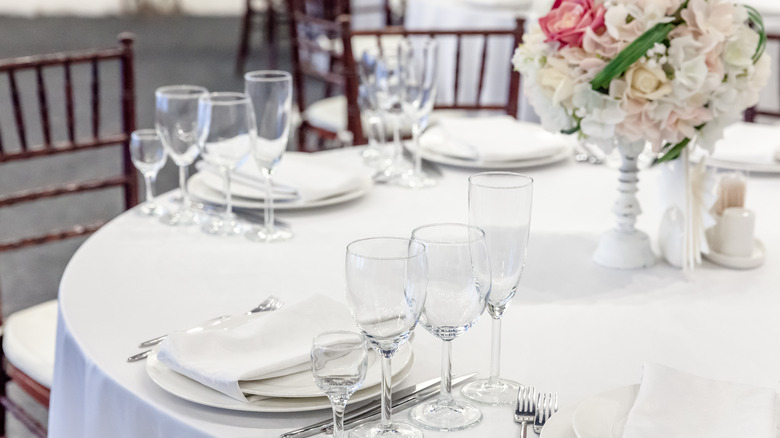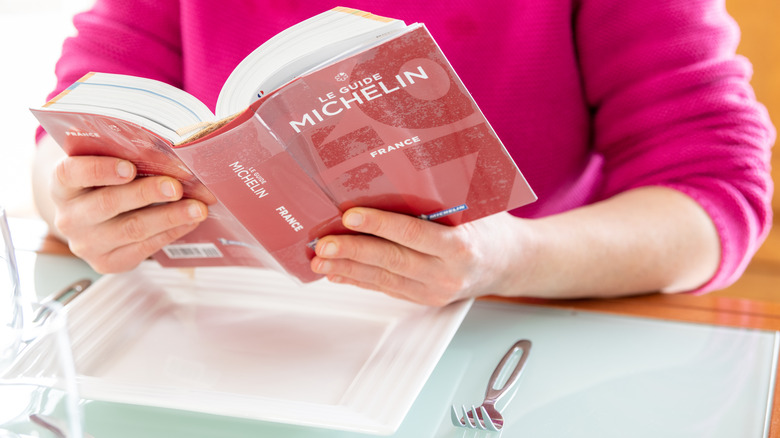Everything You Need To Know About Michelin's Fork And Spoon Rating
If you're interested in fine dining, you're undoubtedly familiar with Michelin star ratings. Conceived by the French tire manufacturer, Michelin, in 1900, the guide started out as a gimmick — a sort of connect-the-dots road map of France with each dot indicating the location of a hotel or a travel-related business (via Fine Dining Lovers). The idea was to give car owners a reason to drive more and, in the process, wear out more tires — which, conveniently, Michelin could replace.
The French guide became so popular that Michelin added restaurants to its listings and expanded into other countries, eventually hiring undercover inspectors to visit and rate businesses, hotels, and restaurants (via Fine Dining Lovers). In 1926, Michelin introduced a one-star rating to indicate a "very good restaurant in its category," (via Escoffier School of Culinary Arts), eventually adding two stars for "worth a detour," and three stars indicating the restaurant is "worth a special journey."
In 2020 Fine Dining Lovers reported that only 2,651 restaurants were Michelin-starred out of an estimated 15,000,000 worldwide (via Santorini Chicago). This includes 2,160 one star restaurants, 385 with two-stars, and 106 with three-stars. Chefs around the globe continue to reach for the stars, hoping to secure an official acknowledgment — but it's not all about food.
It's not about the food
If you can't make it to the lauded Michelin-starred restaurants, consider the sometimes confusing Fork and Spoon designation — a lesser-known accolade that rates restaurants based solely on comfort and atmosphere. That's nothing new for Michelin. The venerable guide has long-rated hotels on things like comfort, service, and amenities. The thing about Fork and Spoon — the reason we think it's a bit confusing — boils down to its name and rating icons. Depicted by a crossed fork and spoon, the accolade has absolutely nothing to do with food. Instead, it ranks dining establishments based on comfort and atmosphere, with one Fork-and-Spoon icon indicating a venue is "quite comfortable" up to five icons designating a luxurious setting (via Face Food Mag).
While Michelin stars and Michelin Fork and Spoon designation would seem to go hand-in-hand, the fact is inspectors visiting a site do not consider interior decor, table setting, or service quality when awarding a Michelin Star. Their judgment is based solely on the quality of the ingredients, mastery of flavor and cooking techniques, and how the chef conveys his personality through food, value, and consistency of experience across several visits (via Michelin). This is basically everything not covered in the Fork and Spoon assessment. So, in effect, a restaurant could serve five-star food in a zero Fork and Spoon restaurant, and vice versa — a five Fork and Spoon restaurant could serve mediocre food in a fabulous setting.

